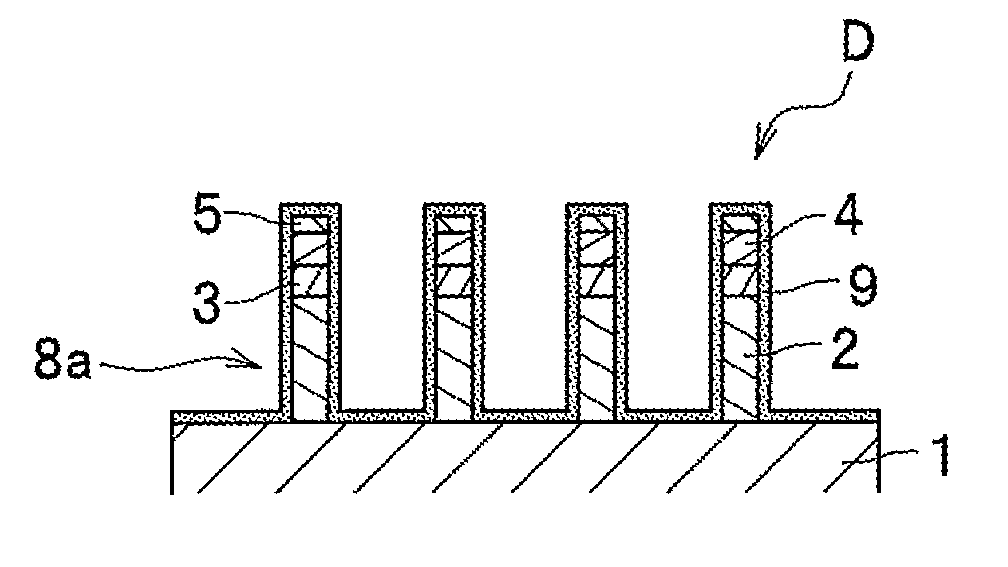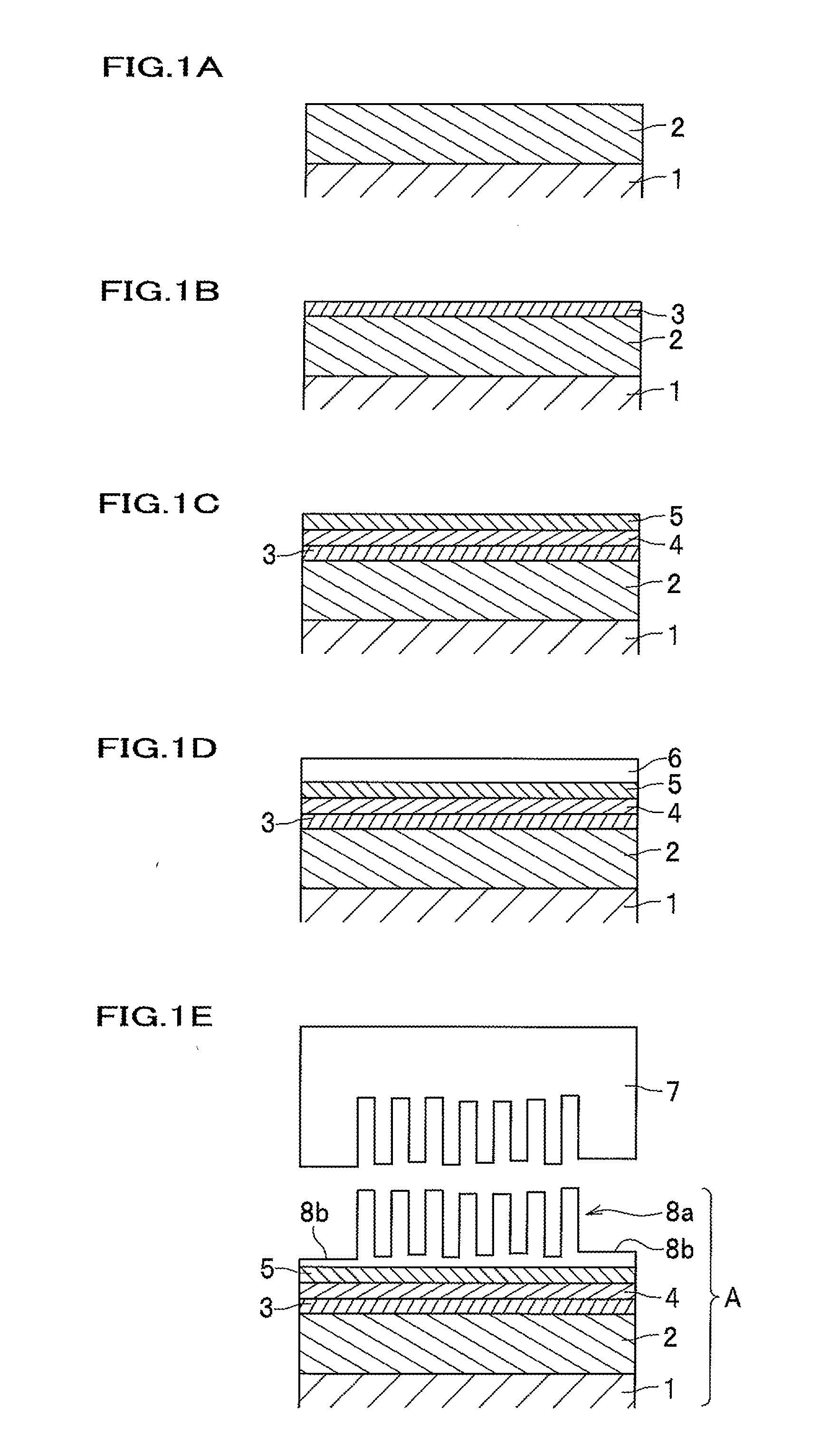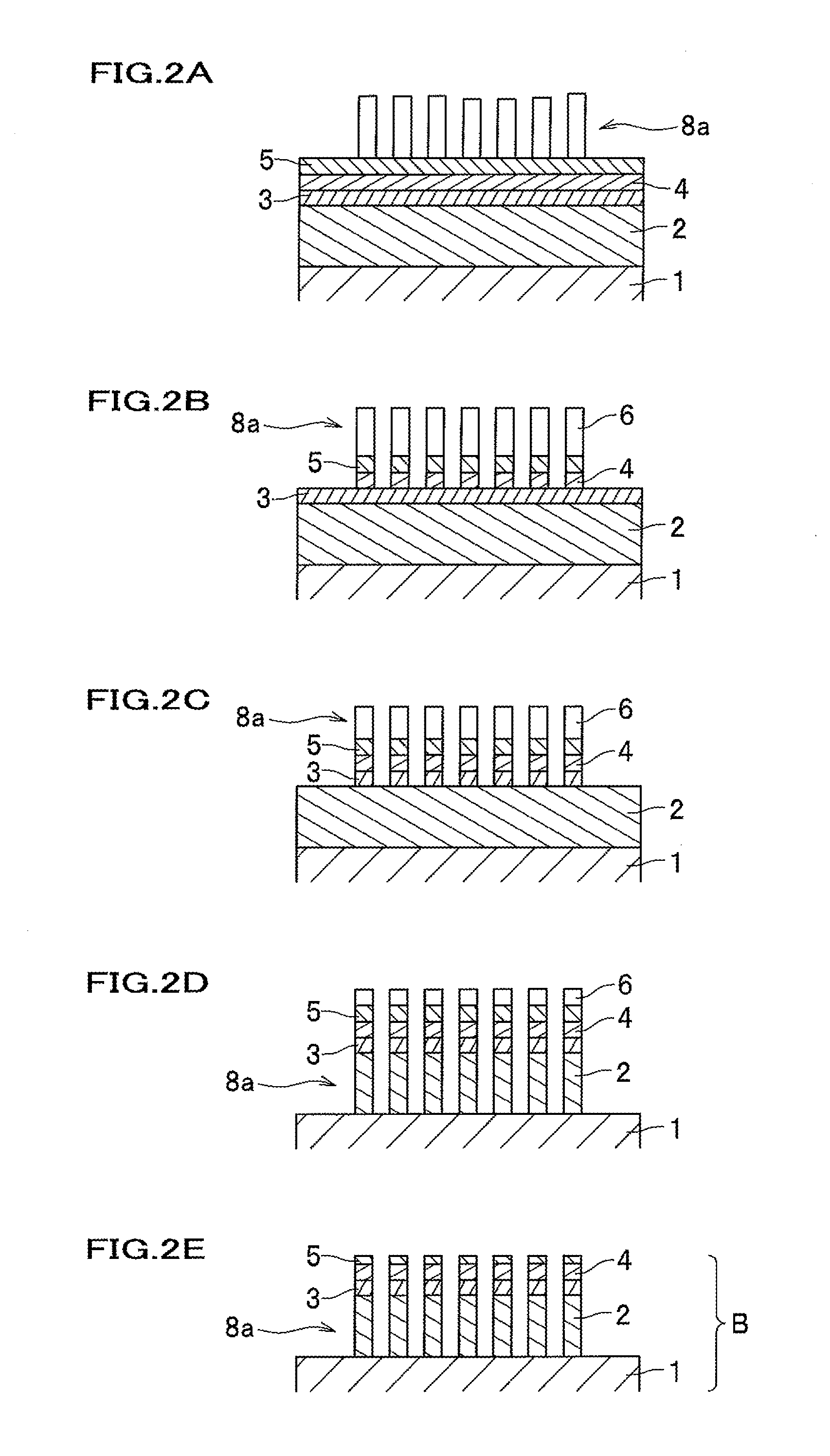Microfine structure formation method and microfine structure formed body
a microstructure and structure technology, applied in the field of microstructure formation methods and microstructure formation methods, can solve the problems of increasing the difficulty of processing such a microstructure by photolithography, and the increase in the exposure time (or drawing time) requires a longer time for completing the pattern
- Summary
- Abstract
- Description
- Claims
- Application Information
AI Technical Summary
Benefits of technology
Problems solved by technology
Method used
Image
Examples
example 1
[0102]In this EXAMPLE 1, the microfine structure forming bodies A and B were prepared by performing the steps shown in FIGS. 1A to 1E and FIGS. 2A to 2E.
[0103]As shown in FIG. A, the metallic thin film 2 consisting of aluminum (thickness of 150 nm) was deposited on the surface of the substrate 1 (a synthetic quartz substrate: diameter of 100 mm, thickness of 0.7 mm) by a spattering method.
[0104]Next, as shown in FIG. 1B, the oxide layer 3 (thickness of 6 nm) was formed on the surface of the metallic thin film 2 by an O2 plasma treatment method.
[0105]As shown in FIG. 1C, the first adhesive layer 4 was first deposited on the surface of the oxide layer 3 by a vapor deposition method via using bis(triethoxysilylpropyl)-disulfide (Wako Pure Chemical Co. Ltd.). Next, on the surface of the first adhesive layer 4 thus obtained, the second adhesive layer 5 was deposited by a vapor deposition method via using γ-glycidoxypropyl-trimethoxysilane (Tokyo Chemical Industry Co., Ltd.)
[0106]Next, as...
example 2
[0124]In this EXAMPLE 2, bis-triethoxysilylethane (Tokyo Chemical Industries, Co. Ltd.) was used for the first adhesive layer 4, and 3-acryloylpropyltrimethoxysilane (Shin-etsu silicone Co. Ltd.) was used for the second adhesive layer 5, as shown in FIG. 1C.
[0125]Further, the photocurable resin layer 6 was formed by using an acrylate mixture of which main component was neopentylglycol diacrylate (Shin-Nakamura Chemical Industries Co. Ltd.).
[0126]Except for the above mentioned differences, totally 100 microfine structure forming bodies A and B were respectively prepared in the same method as in EXAMPLE 1.
[0127]The first microfine structure forming body A had a height of 84±2 nm at the pattern part (or convex part 8a) and a thickness of 7±3 nm at the remaining film part 8b. The first microfine structure forming body B had a full-pitch of 150±1 nm, a land-pitch of 88±5 nm, and a height of 150±1 nm. Within a circular area of a 100 mm diameter in the first microfine forming body structur...
example 3
[0131]In this EXAMPLE 3, a microfine structure forming body C forming a microfine structure on the substrate 1 (shown in FIG. 3) was prepared by etching the microfine structure forming body B (refer to FIG. 2E) prepared in EXAMPLE. 1 using fluorine based gas.
[0132]A cross sectional surface of the microfine structure forming body C was measured at several points by a SEM (scanning electron microscope). Hereby, it was determined that a line-and-space pattern made of glass was formed, having a full pitch of 150±1 nm, a land pitch of 88±6 nm, and a height of 100±1 nm.
[0133]Note a defect rate of the line-and-space pattern within a circular area having a 100 mm diameter in the microfine structure forming body B was less than 1%.
PUM
| Property | Measurement | Unit |
|---|---|---|
| thickness | aaaaa | aaaaa |
| thickness | aaaaa | aaaaa |
| thickness | aaaaa | aaaaa |
Abstract
Description
Claims
Application Information
 Login to View More
Login to View More - R&D
- Intellectual Property
- Life Sciences
- Materials
- Tech Scout
- Unparalleled Data Quality
- Higher Quality Content
- 60% Fewer Hallucinations
Browse by: Latest US Patents, China's latest patents, Technical Efficacy Thesaurus, Application Domain, Technology Topic, Popular Technical Reports.
© 2025 PatSnap. All rights reserved.Legal|Privacy policy|Modern Slavery Act Transparency Statement|Sitemap|About US| Contact US: help@patsnap.com



